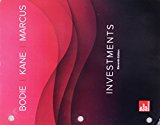
(A)
Adequate Information:
The mutual fund total in the beginning of the year is $200 million. The shares outstanding are 10 million. The dividend income accounts for $2 at the year end. The increase in price of fund portfolio takes place by 8%. The 12b-1 fees charged by the fund accounts for 1%
To calculate:
Net asset value for the investor at the beginning and the year end
Introduction:
Net asset value is ascertained by subtracting the total value of liabilities from the total value of asset of any entity. It reflects the net value of a particular entity at a particular point of time. It is generally used in context of exchange traded funds and mutual funds.
(B)
To calculate:
Net
Introduction:
Rate of return refers to the ratio of loss or profit ascertained in the financial year with respect to the investment which is generally expressed in percentage of decrease or increase in the investment's value during the given period of time.
Want to see the full answer?
Check out a sample textbook solution
Chapter 4 Solutions
GEN COMBO LOOSELEAF INVESTMENTS; CONNECT ACCESS CARD
- see itPlease don't answer i posted blurred image mistakely. please comment below i will write values. if you answer with incorrect values i will give unhelpful confirm.arrow_forwardNo use ai. if image is blurr or data is not showing properly then dont answer i will sure deslike. please comment i will write values.arrow_forwardDon't use ai. if image is blurr or data is not showing properly then dont answer i will sure deslike. please comment i will write values.arrow_forward
- no ai Please don't answer i posted blurred image mistakely. please comment below i will write values. if you answer with incorrect values i will give unhelpful confirm.arrow_forwardFinance SubjPlease don't answer i posted blurred image mistakely. please comment below i will write values. if you answer with incorrect values i will give unhelpful confirm.arrow_forwardcalculate ratios for the financial statment given and show all working manually: 3. TIE Ratio 4. Cash Coverage Ratioarrow_forward
- calculate ratios for the financial statment given and show all working manually: 1. Debt Ratios 2. Debt to Equityarrow_forwardcalculate the following ratios for the statements and show all working: 1. Current Ratios 2. Quick Ratio 3. Cash Ratioarrow_forwardDont solve this question with incorrect values. i will give unhelpful . do not solvearrow_forward
 Essentials of Business Analytics (MindTap Course ...StatisticsISBN:9781305627734Author:Jeffrey D. Camm, James J. Cochran, Michael J. Fry, Jeffrey W. Ohlmann, David R. AndersonPublisher:Cengage Learning
Essentials of Business Analytics (MindTap Course ...StatisticsISBN:9781305627734Author:Jeffrey D. Camm, James J. Cochran, Michael J. Fry, Jeffrey W. Ohlmann, David R. AndersonPublisher:Cengage Learning
